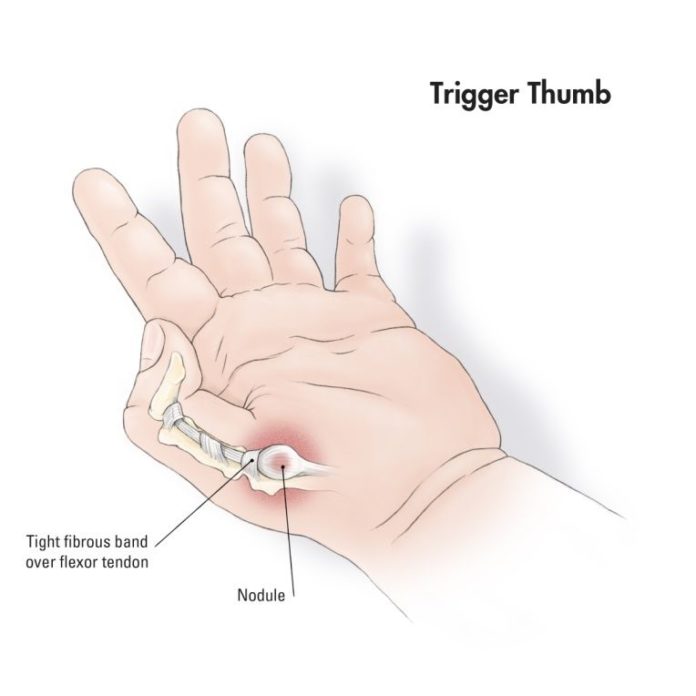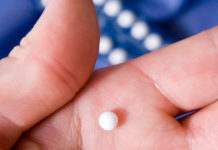What is trigger finger?
Trigger finger, medically known as stenosing tenosynovitis, is a disease of the tendons of the hand. It is a painful condition in which the fingers or thumb get locked in bending position. There is difficulty in straightening the affected finger; and there is a clicking or popping sound on straightening the finger. Trigger finger can appear in one finger or may involve many fingers at one time. Though a common condition in the right hand, it can appear in both hands as well. Trigger finger makes a person anxious and frustrated since it interferes with daily life and work. It affects the efficiency of a person adversely, especially while performing tasks related to the hands. Homeopathic treatment for trigger finger is very effective. With the use of homeopathic medicines, the intensity of symptoms like pain, stiffness, and frequency of episodes gradually declines. A complete recovery in trigger finger follows.
Every case of trigger finger requires a detailed case taking that will help in finding the underlying cause and also the characteristic symptoms of the person. These symptoms are important for the selection of the most suitable medicine for the patient. Homeopathic medicines treat trigger finger by correcting the underlying cause. Homeopathic treatment for trigger finger is natural, safe, and has no side effects.
What are the symptoms of trigger finger?
Common early symptoms include:
- a lingering soreness in the base of your thumb or another finger
- a bump or lump around the base of your finger near the palm
- tenderness around the base of your finger
- a clicking or snapping noise with movement
- stiffness in your finger
If you don’t get treatment for it, trigger finger can progress. Advanced symptoms include a thumb, another finger, or both being locked in a bent or straight position. You may also be unable to uncurl your finger without using the other hand if you have an advanced case of trigger finger.
The symptoms of trigger finger tend to be worse in the morning. The finger typically starts to relax and move more easily as the day goes on.
What causes trigger finger?
Your fingers have several small bones. Tendons connect these bones to muscles. When your muscles contract or tighten, your tendons pull on your bones to move your fingers.
Long tendons, called flexor tendons, extend from your forearm to the muscles and bones in your hands. Flexor tendons slide through a flexor tendon sheath, which is like a tunnel for the tendon. If the tunnel narrows, your tendon can’t move easily. This is what occurs in trigger finger.
When the tendon slides through the narrowed sheath, it becomes irritated and swells. Motion becomes extremely difficult. Inflammation may cause a bump to develop, which further restricts movement. This results in your finger staying in a bent position. It becomes extremely difficult to straighten.
What are the Risk Factors for Trigger Finger?
Overuse of hands with frequent and repetitive movements of hands and fingers put a person at risk of getting trigger finger. Individuals who carry out regular or continuous straining movements, like gripping or grasping of hands and fingers for a prolonged time, are prone to getting trigger finger. Persons in certain occupations or activities in which there is a constant straining of the fingers and hands tend to get trigger finger. Musicians, farmers, and laborers are at high risk of developing trigger finger. Apart from overuse, medical conditions like diabetes mellitus, rheumatoid arthritis, and gout also make a person prone to trigger finger. Trigger finger usually affects middle aged people. Females are more likely to suffer from trigger finger than males.
How is trigger finger diagnosed?
A doctor can usually diagnose trigger finger with a physical exam and some simple questions about your medical history.
Your doctor will listen for characteristic clicking upon movement. They’ll look for a bent finger. They may also watch you opening and closing your hand. Diagnosis typically won’t require an X-ray or other imaging tests.
How is trigger finger treated?
At-home treatments
Treatments depend on the severity of the symptoms. At-home treatments include:
- taking a break from repetitive activities for four to six weeks
- wearing a brace or splint to restrict motion and rest the hand
- applying heat or ice to reduce swelling
- placing your hand in warm water several times throughout the day to relax the tendons and muscles
- gently stretching your fingers to enhance their range of motion
Medications
Medications may help relieve inflammation. Anti-inflammatory medications include:
- ibuprofen (Advil)
- naproxen (Aleve)
- prescription anti-inflammatories
- steroid injections
Surgery
If medications and at-home treatments don’t work, your doctor may recommend surgery. Surgeons perform surgery for trigger finger on an outpatient basis. After you get an anesthesia shot, your surgeon makes a small cut in the palm and then cuts the tightened tendon sheath.
As the tendon sheath heals, the area is looser, helping your finger move more easily. Surgery risks include infection or ineffective surgical results.
Surgery recovery can take a few weeks to six months. Your doctor may recommend physical therapy exercises to relieve post-surgery stiffness. As a general rule, once the doctor releases the tendon sheath, the tendon can move freely.
You should be able to return to your normal activities within a few days. Your doctor will remove the sutures in 7 to 14 days.
What is the outlook for people with trigger finger?
Lifestyle changes and avoiding certain activities are often effective treatments for trigger finger.
Corticosteroid treatment may also be effective, but the symptoms may return after this treatment.
According to a study published in the Journal of Bone and Joint SurgeryTrusted Source, researchers found that symptoms had returned in 56 percent of affected digits 12 months after participants received corticosteroid injection treatments.
These symptoms typically came back several months after receiving the shot. However, the injection is quick and simple. It can allow you to put off having surgery until a time that’s more convenient.
The researchers in this study also found that participants with insulin-dependent diabetes, who were also younger and had several symptomatic fingers, were more likely to have symptoms return.
Homeopathic Treatment for Trigger Finger
There are many homeopathic medicines for trigger finger. Some of them are Arnica Montana, Ruta Graveolans, Rhus Tox, Causticum, Lycopodium, Mercurius Sol, and Sulphur. Arnica Montana is an excellent homeopathic medicine for trigger finger where the condition develops due to straining or overexertion of the hands. The patient may have soreness and pain in the fingers that get worse with a slight touch. Ruta Graveolans is a beneficial homeopathic medicine for trigger finger caused by straining or overuse of the tendons of the hands. A particular symptom for patients needing Ruta Graveolens is the aggravation of the problem in the cold. The fingers may also be stiff and sore. Rhus tox is helpful in cases of trigger finger where there are noticeable rigidity and stiffness in the fingers during initial movement in the morning. Patients needing this homeopathic medicine get relief by moving their fingers and hands continuously. The problem may aggravate by resting the hand. Causticum is a valuable homeopathic medicine for trigger finger in cases where there are pain and stiffness in the fingers along with difficulty in straightening the fingers. Lycopodium is a suitable homeopathic medicine in cases of trigger finger where nodes on fingers develop. The other symptoms are stiffening of fingers along with a burning pain in the palms. Mercurius Sol is a beneficial homeopathic medicine for trigger finger where there is locking of fingers and stiffness in the hand while working. On moving the hands, there may also be a cracking sensation. Sulphur is useful in cases where the fingers lock when the person tries to grasp something. There may also be nodules on the fingers and cracking of finger joints in such cases.



















































